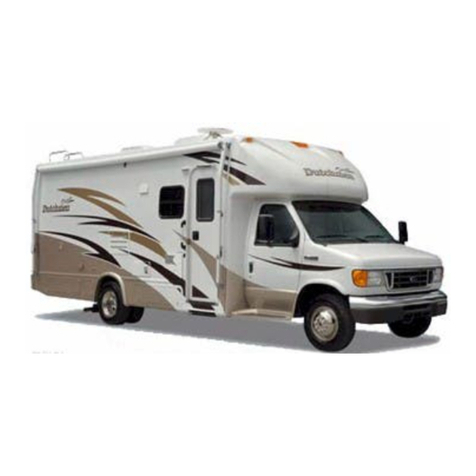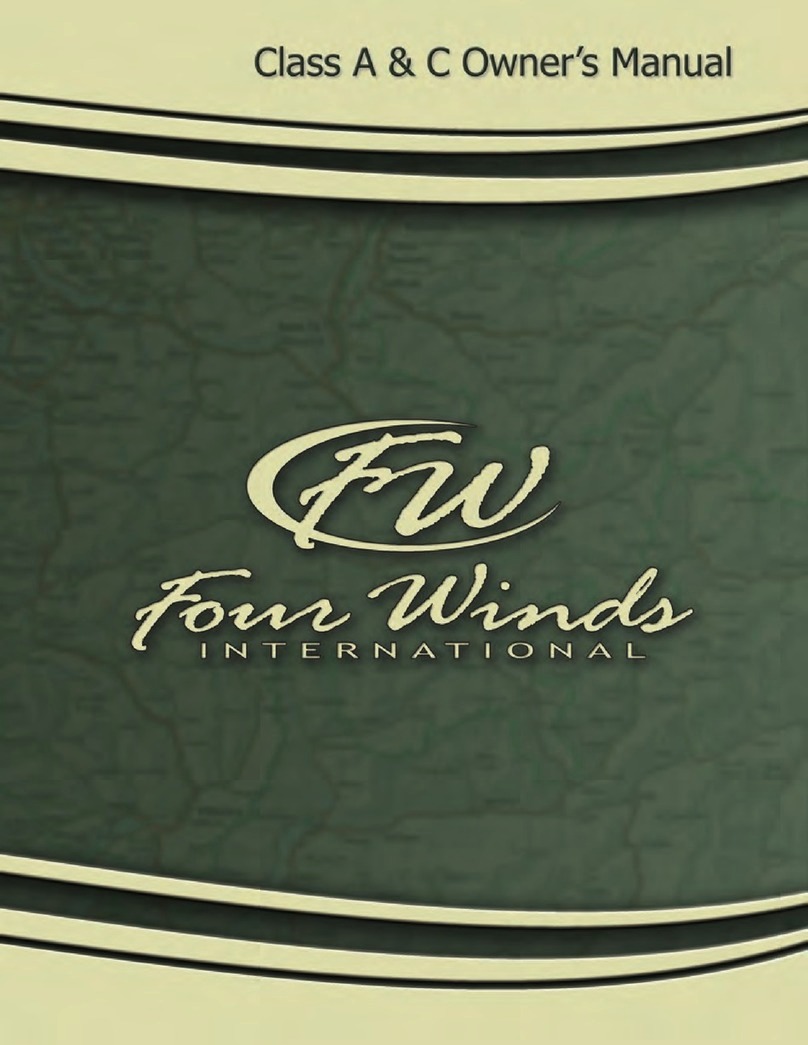INTRODUCTION
It's exciting taking ownership
of
a new purchase as substantial and
full
of
nearly unlimited possibilities for the future as a motor home.
Thank you for choosing a Four Winds International product.
We
take your choice seriously.
That's
why we've engineered this vehi-
cle
to
meet and,
in
many cases, exceed lederal nnd state regulations and
requirements for vehicles
of
this type.
Our
priniary concern has been to
provide
our
customers with a beautiful recreational vehicle that is not only
dependable and cost effective, but also safe.
To
keep this vehicle at peak perrormance ilnd
Lo
obtain the maximum
pleasure from its use over an extended period, the owner must take a per-
sonal interest in
its
care and
oper~tion.
That is the purpose
of
this
Owner's
Manu,al. Il outlines the operation
of
the unit's various systems and offers many helpful hints that will enable
you to obtain the most pleasure from this. traveling home.
2
TABLE
OF
CONTENTS
INTRODUCTION. . . . . . . . . . . . . . . . . . . . . . . . . . . . . . . . . . . . . . .
..
2
WARRANTY
INFORMATION............................
6
FIRST TRIPS . . . . . . . . . . . . . . . . . . . . . . . .
..
. . . . . . . . . . . . . . . .
..
10
TRAVEL PREPARATION. . . . . . . . . . . . . . . . . . . . . . . . . . . . . . .
..
II
Under
Hood.
. . . . . . . . . . . . . . . . . . . . . . . . . . . . . . . . . . . . . . .
..
It
Exterior . . . . . . . . . . . . . . . . . . . . . . . . . . . . . . . . . . . . . . . . . . ,
..
, I2
Under Vehicle
.......................
,
....
,
.......
, . .
..
12
Inside Driver's Compartment
............................
12
_
RV
System
Check.
. . . . . . . . . . . . . . . . . . . . . . . . . . . . . . . . . . .
..
13
Loading
..................................
"
.........
13
Weight Distribution. . . . . . . . . . . . . . . . . . . . . . . . . . . . . . . . . . .
..
14
Weighing the Vehicle
...
. . . . . . . . . . . . . . . . . . . . . . . . . . . . . .
..
14
DRIVING
.....................
~
.............
\
...........
16
Clearance. . . . . . . . . . . . . . . . . . . . . . . . . . . . . . . . . . . . . . . . . . .
..
16
On the Road
......
, . . . . . . . . . . . . . . . . . . . . . . . . . . . . . . . . .
..
17
On-Ranlps . . . . . . . . . . . . . . . . . . . . . . . . . . . . . . . . . . . . . . . . . .
..
'7
Off-Raillps
......................
:\. . . . . . . . . . . . . . . . . . .
..
17
Sudden Moves
........................................
.
Turning.
. . . . . . . . . . . . . . . . . . . . . . . . . . . . . . . . . . . . . . . . . . .
..
18
Hills, Dales and Making the Grade
.......................
19
Overheating. . . . . . . . . . . . . . . . . . . . . . . . . . . . . . . . . . . . . . . . .
..
20
Emergency Action
....
,-
.................................
20
Getting Back on the Road
...............................
22
: Parking
...............................................
23
Trailer Towing. . . . . . . . . . . . . . . . . . . . . . . . . . . . . . . . . . . . . . .
..
24
SAFETy
................................................
25
Liquid Petroleum Gas
.................................
.
LPG Line Safety Check
...............................
.
Short Term Storage
....................................
.
Emergency Exits
......................................
.
Fire Extinguishers
.....................................
.
Fire Safety & Smoke Alarm
............................
.
Electrical Safety
......................................
.
Cold Weather Operation Tips
...........................
.
26
27
28
28
28
28
29
30
UNIT SYSTEMS. . . . . . . . . . . . . . . . . . . . . . . . . . . . . . . . . . . . . . .
..
31
Living Quarters. . . . . . . . . . . . . . . . . . . . . . . . . . . . . . . . . . . . . .
..
31
Condensation. . . . . . . . . . . . . . . . . . . . . . . . . . . . . . . . . . . . . . . .
..
3 I
3
































